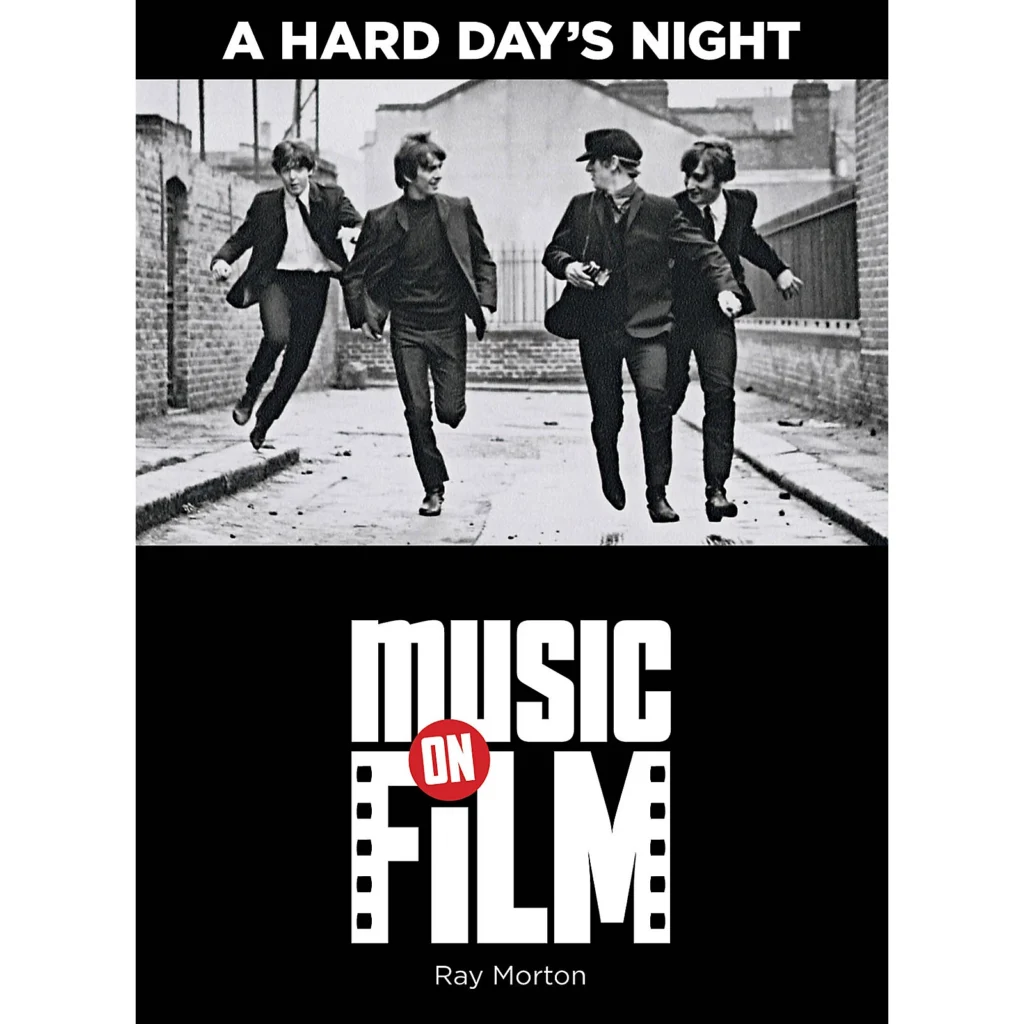
Back in 2000, Miramax Films reissued the classic A Hard Day’s Night in movie theaters. Since I was unable to see the 1964 film when it first appeared in theaters (due to the fact that I hadn’t been born), I excitedly gathered a group of friends to see The Beatles musical as it was meant to be seen: on the big screen. Sitting in the cinema with a sold-out crowd, many of whom hadn’t yet been born in 1964, I was wondering if the film’s irreverent humor and buoyant music would still resonate. Indeed, over 35 years later, the audience still laughed at the Beatles’ quick wit and the “young versus old” scenes, and tapped their feet to the incredible songs. Now 47 years have passed since A Hard Day’s Night first captured the height of Beatlemania, and the movie still manages to attract younger generations while captivating original fans. Ray Morton’s Music on Film: A Hard Day’s Night book thoroughly examines what critic Andrew Sarris once called “the Citizen Kane of jukebox musicals.”
In just 154 pages, the short book traces the history of the film from its origins as a “cheap and fast” flick to promote what many figured would be the temporary Beatlemania sensation. Originally one of The Beatles’ first film offers was to do a cameo in The Yellow Teddy Bears; as Morton states, the film would serve as a “lurid drama about teen sex and pregnancy set in an all-girls school in the English suburbs.” The Beatles would play backup for the lead character, a fledgling pop star. Since the band would not be composing their own music for the movie, the group wisely declined the offer. Wanting to create a film that would be more than just a throwaway “jukebox musical” that existed simply to make a quick buck, The Beatles waited for the right offer. That offer came in the form of United Artists, who recruited expatriate director Richard Lester and producer Walter Shenson to create a film that would accurately reflect The Beatles’ true personalities.
The most interesting aspects of Morton’s book concern how Lester, Shenson, and screenwriter Alun Owen sketched out the storyline and script. Realizing that they were working with untrained actors, they decided to place the band in situations that they would already be highly familiar with–trains, hotel rooms, backstage areas, a television studio, and, of course, the stage. So the Fab Four wouldn’t have to portray different characters, Lester decided they would play admittedly oversimplified versions of themselves. Another key point Morton makes is that scenes involving “The Beatles taking on (in a comedic way) authority figures, the upper class, and people seeking to exploit them” intentionally emphasize how the group came from modest circumstances yet managed to conquer the music and cultural world.
While Morton details the screenwriting process and shooting schedule, he spends little time on The Beatles’ songs. Presumably the author believes that the soundtrack would merit a separate book, or that other writers have already discussed the songs in depth. While this remains a somewhat odd omission, the story of how A Hard Day’s Night was shot, edited, and initially received by critics still fascinates. However, hardcore Beatles fans may not find too much of Morton’s information novel. The few photos included in the book’s center have all been published previously. Stories of which scenes were trimmed from the final cut (such as an extended segment featuring Paul McCartney) and that their performance of “You Can’t Do That” was left on the cutting room floor will not be new to longtime fans and collectors. But stories of Lester’s unhappiness with Wilfred Brambell’s (“Paul’s Grandfather”) performance as well as the intense time constraints that pressured the film’s editors prove highly interesting for any fan.
Fans of film musicals, rock music, and The Beatles should add Morton’s Music on Film: A Hard Day’s Night to their libraries. While not all of Morton’s research may be new–and he heavily relies on other sources rather than original research such as new interviews–the book succinctly tells the story of a classic movie that still enchants audiences.